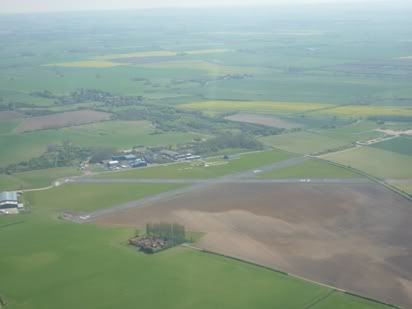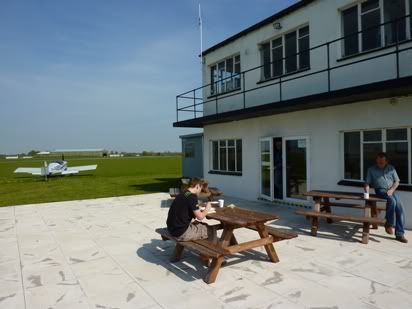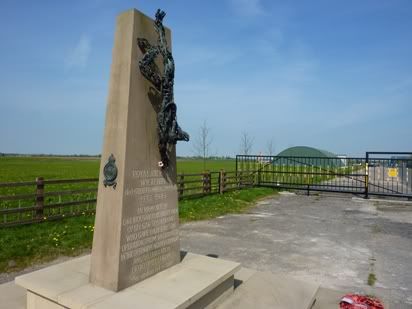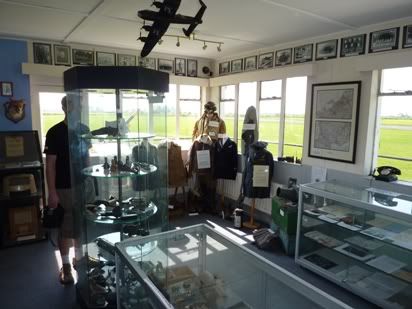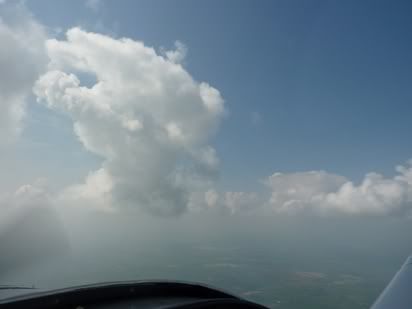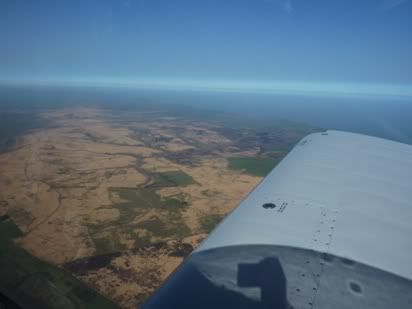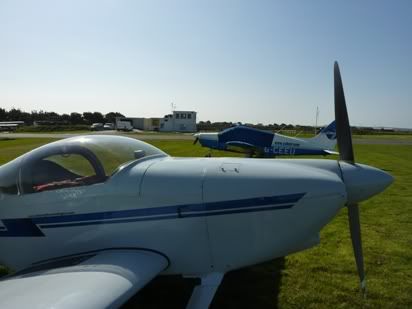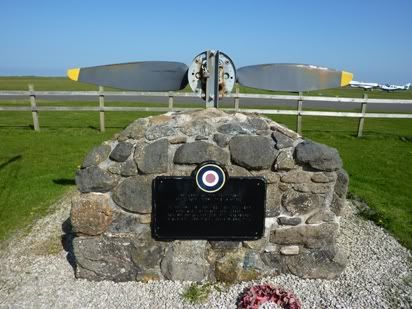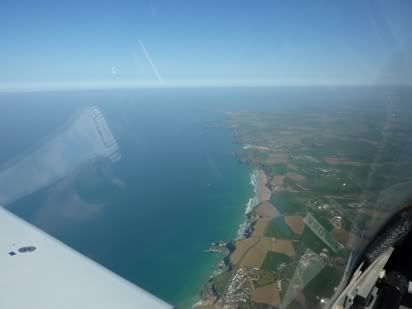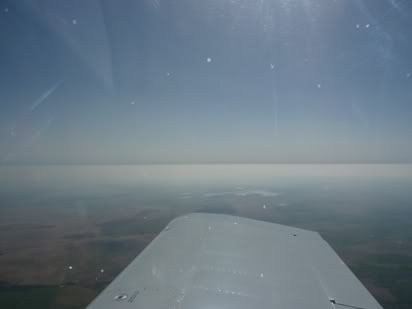Swanwick general
The centre itself is really tucked away near Hamble Point Marina. You think you must be lost as you are in a small, quiet village, then you turn down a lane and spot a sign. Then you come upon the security gate, with the main building hidden in a dip in the ground. They are very hot on security and must see government issued photo id and check your car before allowing you through. Once through the building itself is quite splendid. Very modern and feels like a ‘no expenses spared’ typical government project (although NATS are now a limited company, HMG still hold 48% of the shares, but apparently may be selling those soon).
The building feels deserted and walking through it we bumped into very few people walking the corridors. Many of the rooms were either empty or partially used. I believe that they are anticipating moving some more functions down from other parts of the country and of course ramping up for the Olympics, so that may account for some of the space. I know my company would not settle for such low occupancy.
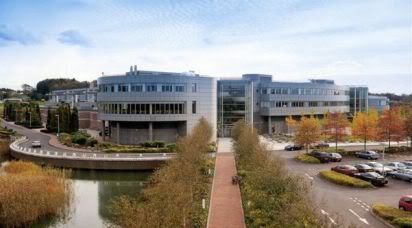
The very swanky Swanwick building near Southampton
But a really nice building in extensive, landscaped surrounds, apparently built on the site of an on brickworks.
Flight plans
First we had a presentation from the chap that runs the team that passes flight plans to the appropriate units. It was useful understanding how it works. It is clearly a legacy of yesteryear where direct copper connections and telex protocols ruled the world. I guess that it could easily be replaced by TCP/IP and the current internet protocols and XML standards, but as that required world-wide agreement and re-equipping and changing airfields as remotes as secondary airfields in Africa, it will be some time before this happens.
He was keen to demonstrate AFPx, the internet flight plan submission and messaging program that NATS make available free of charge. There are 5500 UK accounts active (probably mainly private pilots). He explained the early problems with addressing flight plans for landing in France and that they used a non-ICAO approach to addressing, so NATS have ‘fixed’ the problem by creating a single ‘group email’ type address that automatically send the flight plan to pretty much every French region. Apart from that, the dreaded ‘addressing’ seemed to be automatic. It seems a good system and I would use it myself, except that I tried it once. I went through the trouble of registering for an account and getting my ‘one time only’ password, I tried to sort out my account. The problem I had is that their password standards are insanely tight, far tighter than even my on-line banking. They insist on all sorts of weird and random combinations of upper and lower case, numbers and special symbols. No problem, I can manage that – oh, and they have a huge database of ‘banned combinations’ so you can’t use any vaguely recognisable English word. I tried for ten minutes to find a password that it would accept and one that I had a chance or remembering and failed. I realised that the password was so secure that I would be forced to write it down, which kinda defeats the object – so I gave up in disgust.
Not a bad system at all guys and I would use it except for your crazy password requirements, fix that and I would use it. In the meantime, I use the far friendlier and easier Olivia for flight plans to and from France and either local facilities or Sky Demon for flight plans for all other European countries.
Sector Control
We then had a presentation of how the UK controlled airspace was divided up, what was controlled from Swanwick and what was controlled fro Prestwick. He explained how the desks were arranged and the staff structure for each sector. We were then shown from a sort of glazed viewing gallery, the floor where all the sector control takes place. It was a very large room with a high arched ceiling that looked a bit like the inside of a huge nissen hut. It is completely windowless and the lighting seems to be the same as in the main gaming floors of Las Vegas clubs – subdued. Of course they operate 24 hours a day, but the really busy times are early morning to 10:00 then mid-afternoon to early evening.
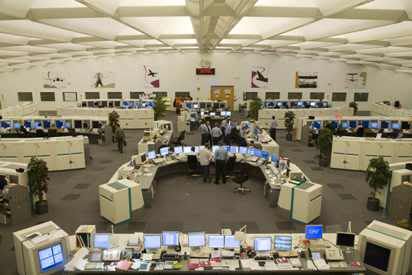
The main room for sector control
It was a fair bit more ‘high-tech’ than I envisaged (but then we are used to those old films with their round, green radar display screens!). I noted that they still use paper flight strips. We were told that they will be doing away with those and going completely electronic sometime later this year.
London Information
After lunch, we were split into two groups. The group I was in was taken first to London Information. These are the guys that I have often spoken to where I cannot get a sensible service from a nearby airfield and when coasting out and back in from the continent. They are base in a corner of the main sector control hall. They have two frequencies to use, on for flights to the west and other for flights to the east. There really are only two people actually manning each frequency as I had pictured, so they can be easily overwhelmed by calls (which I have heard myself on busy weekends – standby you are number 6!). As the name suggests, they do have a lot of information easily available to them, like TAFs and METARs, regional QNH’s, airfield frequencies etc.
They do have a SSR radar display for the whole of the UK, but they are not allowed to use it as such and only really use it occasionally for situational awareness. It is on a single relatively small screen that shows the whole of the UK and is set off to one side of the operators, so if you think that just because you have been given a squawk, they are really seeing you on an SSR radar display and are giving you traffic services in all but name, you will be sadly disappointed! The only traffic picture that they have is the one they have built up in their heads – see it really is you job to ‘see and avoid’.
They were a good bunch of people and very friendly. I can no just picture them on a busy weekend – I certainly wouldn’t like to do that job!
Distress and Diversion
The UK is apparently virtually unique in the world in offering a dedicated D&D unit. Most other countries integrate this into their sector controls. The D&D unit are located in their own room. The facilities are paid for by NATS, but the unit is manned by the RAF and they provide D&D to both civilians on 121.5 and the military on a separate UHF frequency. When we visited they were manned by a Flight Lt (OIC), a Flight Sergeant and two Corporal controllers.
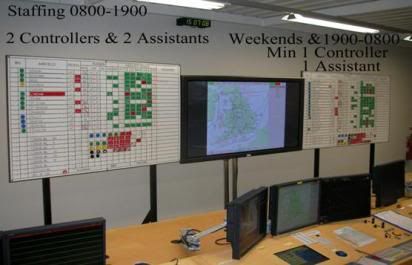
A mixture of high and low tech at London D & D
The unit is a curious mixture of relatively low-tech (whiteboards and airfield manuals) and high-tech (awesome automatic triangulation kit). The impressive facility that they have is that on one screen they will get automatic triangulation lines appear everytime someone transmits on 121.5, and as long as they can the person isn’t flying too low (3000’ and above ideal), then they can get a pretty good immediately location fix. They can then zoom in on the location and return with increasing levels of detailed maps, including the OS maps. That is how they can be so helpful in telling a lost pilot what features to look for and ‘steering’ the pilots verbally. Believe me that if you are ‘uncertain of position’ and at a sensible height, they can help you and are very pleased to be able to do so. Do not hesitate to give them a call before the situation gets really serious.
They emphasised that they are very happy with training calls and practice pans. Just listen out first and if nothing is going on, either ask or just go into it. They said to ignore any caustic comments you may get from airliners (e.g. get off the guard frequency), unlike other countries, it is perfectly OK to use 121.5 for training calls to D&D as there is no separate training frequency.
The whiteboard displays the main RAF airfields and their current weather status expressed in the usual military colour-coded terms. They have a huge amount of information at their fingertips. They did say that probably 90% of their calls came from General Aviation pilots. It is good to know these guys are there if you need them. I now know that if I really did get into a Mayday situation and managed to get as far as a radio call (priorities being aviate, navigate, communicate), that I needn’t get too distracted with a detailed position report.
A really good day. Highly recommended.
